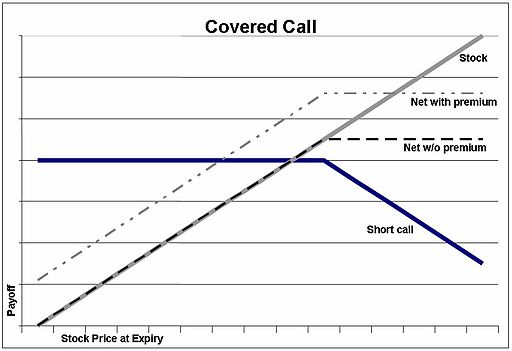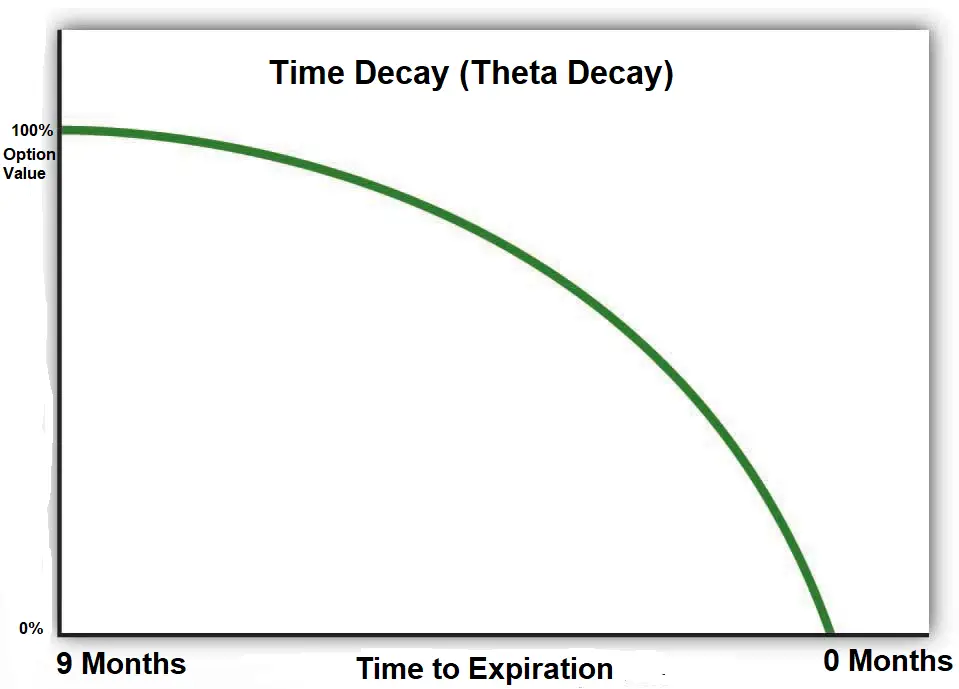Covered calls are an income strategy for traders and investors to earn money on stocks they hold.
Covered Call Writing
Covered call writing is an appropriate strategy in a bull market or one that is trading inside a repeating price range.
Creating a covered call option play is when a trader or investor sells out-of-the-money call options on an existing stock position. The risk to the upside move on these short calls are covered by the stock that hedges the position. The call writer can not lose money on the short calls only the stock position.
Covered Call Strategy
An investor who holds a stock in their portfolio can write a covered call option contract on each 100 shares. This is an income producing strategy for collecting option premium on existing positions. The downside risk on a covered call write is that the underlying shares go lower than the compensation from the option premium before option expiration. The upside risk of the call option is hedged by the stock as the stock will be called if the option price closes above the covered call strike price.
The upside reward of the stock will belong to the covered call buyer so the covered call acts as a profit stop on the shares it is written on. The covered call writer can profit from any capital gains that happen before the short call goes in-the-money.
If the covered call options are not in-the-money by expiration then the writer keeps all the premium received. The option writer can also buy to close the short covered call options before expiration and write a new call on the stock shares. The theta decay occurs each day on the call options and this can provide profit to the option seller if the stock price doesn’t move down more than the call option price.
If the price of the stock drops the covered call option also creates some offset from the losses in the underlying stock through its premium decrease in value as it moves farther out-of-the-money. The usual goal of the covered call writer is to sell the call option at a strike price far enough away that the stock price will not get there before expiration.
The primary goal of the covered call option strategy is to keep both the stock position and all the call option premium as a profit when it expires worthless. This enables calls to be written on the same stock over and over again and receive a large amount of premium over time to offset the original cost of the stock and generate income.
Covered call options can also be used for those that want to sell a stock position for a specific target price. So the covered call strategy is used to collect premium on a stock position until the target price is reached then the call writer is happy to sell the underlying stock at the call option strike price and let it be called away.
Covered calls are safest when written on strong company stocks with little technical or fundamental risk. Less volatile stocks also provide less risk in the stock being held. The primary risk with a covered call is in the stock part of the option play. It is important to use liquid option chains with tight bid/ask spreads. It can be smart to buy back a covered call option when it has gone down a lot in value and the risk/reward ratio is not favorable for more downside in the premium. The goal of the covered call option play is usually to generate profits on stock you would own anyway.

Can you lose money on a covered call?
Yes, money can be lost on a covered call option play if the stock price goes down more than the value of the short call option before expiration. This would lead to a net loss on the play. However, a new call option can be sold to create more income with a new covered call. The risk in this option play is in the stock not the short call option, as it’s hedged with the shares. There is a risk that the covered call goes deep-in-the-money and some capital gains are missed on the stock and the shares are also called away, but this can still result in a net profit on the call option premium.
How far out should I sell covered calls?
The farther out you sell call options the more time value you get but the slower the decline in that value and the longer time the call option has to move in-the-money.
30 to 45 days out to expiration is the ideal range for selling covered calls to receive good premium and also be in the time period where the time decay begins to accelerate. You want to sell an option contract with enough premium to be worth opening the option play. Approximately 2% of the stock price value is a general rule of thumb for selling covered calls.
